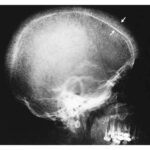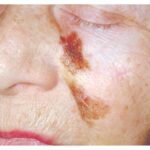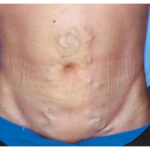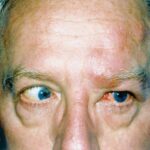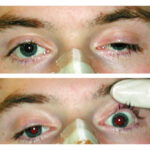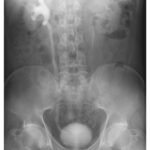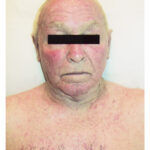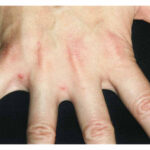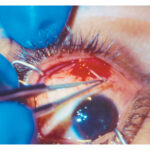A 49-year-old woman with a history of Graves’ disease presents with Skin Changes and thyrotoxicosis. Explore the key diagnostic marker for this condition.

A 49-year-old woman with a history of Graves’ disease presented to the endocrinology clinic with a 3-year history of skin changes on her arms and legs and a 1-year history of thyrotoxicosis symptoms. She had intermittently adhered to carbimazole therapy since her diagnosis 10 years earlier. On physical examination, violaceous, nonpitting, indurated nodules were observed on the dorsa of her hands, distal forearms, and shins (left). A goiter (right, arrow), proptosis, and lid lag were also noted. Laboratory testing showed an undetectable thyrotropin level and elevated total and free thyroxine and triiodothyronine levels. Testing for which value would you most expect to be positive in this patient?
What is the most likely diagnosis?
Graves’ disease, Hyperthyroidism, Proptosis, Thyroid dermopathy, Thyrotropin receptor antibodies
